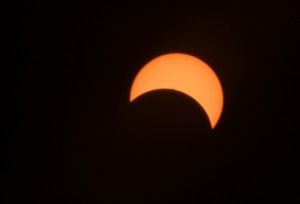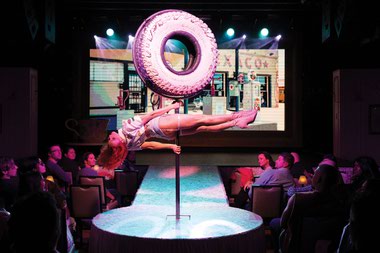You might have noticed electric vehicle charging stations popping up all around town. Shopping centers, offices and hotels now boast infrastructure that can power EVs and help reduce transportation emissions.
The stations are all part of an ongoing effort to electrify transportation across the state. Currently, NV Energy is working with approved funds of roughly $170 million to carry out programs to accelerate transportation electrification. And the Nevada Department of Transportation announced it will receive $38 million from the Infrastructure Investment and Jobs Act to build a reliable statewide charging network.
“We’re really excited to get charging stations on the ground,” says Marie Steele, vice president of integrated energy services with NV Energy.
Steele took over NV Energy’s new EV program in 2013 and has helped the state develop its transportation electrification strategies. Those include installing interstate, urban and public charging depots, and transit and school bus electrification.
Why the focus on fuel-burning vehicles? According to a 2022 report from the Nevada Division of Environmental Protection (NDEP), transportation was the No. 1 emitter when compared to other sectors. EVs, of course, run on electricity, which can come from fossil fuels or renewable sources. And per a 2019 bill, Nevada has committed to increasing its renewable portfolio standard—the amount of electricity sold in the state generated from renewable energy—to 50% by 2030.
Although electric vehicles aren’t the same thing as renewable energy, they’re part of the state’s push toward clean energy and reducing overall emissions, Steele says.
“Very specifically in Nevada, the abundance of renewable energy and that transition from taking our transportation fuels to renewable energy is a fantastic environmental opportunity [and] economic opportunity for the state,” Steele says.
NV Energy designs its EV charging rules with consideration for Nevada’s power grid, and looks for ways to use more renewable energy to power EVs, Steele adds. That includes charging EVs during off-peak hours.
“[We’re] trying to put all new EV loads, where we have access to renewables in the morning—really making that switch to EVs even cleaner by powering by renewable energy in the morning, not just with excess capacity at night,” she says.
When it comes to the grid and electric vehicles, the energy flows both ways. Since EVs essentially are “batteries on wheels,” they can deliver power back to the system. That hypothesis is now being tested.
“The school bus program is a vehicle-to-grid trial,” Steel says. “So we are testing out the ability to utilize the school bus batteries as a resource for the grid as well.”
Getting infrastructure in the ground
In a July 12 webinar, Kandee Bahr Worley, division chief of sustainability and emerging transportation with the Nevada Department of Transportation (NDOT), said the agency is looking forward to “getting infrastructure in the ground” after an extensive yearlong surveying process gathering public and stakeholder input to determine best locations for chargers.
Worley also said that waiting for federal guidance has had a “dragging” effect.
“We’ve been waiting for the correct guidance, so that when we move forward, we know that we’re clear on what it is ... we’re supposed to be doing,” Worley said during the webinar.
NDOT has been tasked with implementing the National Electric Vehicle Infrastructure program, part of the Infrastructure Investment and Jobs Act. Over five years, the agency will develop and submit plans to the U.S. Department of Transportation and Department of Energy to install public charging infrastructure that supports a nationwide network.
Thus far, NDOT has been working with an approved $13.7 million. It’s scheduled to submit the next plan to federal agencies in August.
Largely through a 2021 law, NV Energy has been working with $100 million in approved funds to install 1,000 chargers at urban, interstate, public agency and tourism locations. NV Energy also had approximately $70 million approved for its Transportation Electrification Plan (TEP).
“The TEP was approved maybe a quarter ago. … It expands our interstate corridor charging depot program, which is our partnership with the DOT related to EV infrastructure,” Steele says.
The TEP also expanded eligibility for the state’s electric school bus vehicle-to-grid trial. The trial has nine new sites approved, with 110 chargers.
Technology and accessibility improvements
While much work remains, roughly a decade of commitments to EV infrastructure has already yielded improvements in the system, Steele says. In 2015, when the Governor’s Office of Energy was working to develop the Nevada Electric Highway, chargers worked relatively slowly compared to today’s versions.
There are three main levels of charging: Level 1 with a rate of approximately 5 miles per hour of charge; Level 2 with a rate of 12 to 25 miles per hour of charge; and Direct Current fast chargers, which can bring an EV up to 80% of total charge within 30 to 60 minutes, according to NV Energy’s website.
“Level 2 is a little bit of a slower charge,” Steele says. “It’s either at home or in a different convenience charger. It takes multiple hours to charge. Over the past 10 years, that was actually what was used [and] considered our public charging infrastructure. And a lot of your charging happened at home.
“Really, what’s happened is the evolution of the speed at which things can charge,” she continues. “I think when we developed the Nevada Electric Highway, [that] was what Level 2 chargers and what [Direct Current] fast chargers were at the time. And those DC Fast Chargers have become so much faster over time, where it’s from hours to now, you can do things inside of minutes, if the vehicle can accept it.”
Also, the cost to buy an electric or hybrid vehicle has come down, with a $2,500 tax rebate available for income-eligible customers, and as more manufacturers have started making more of those models. “It’s much more accessible … there’s much greater ability for lower income customers to get those cars as well,” Steele says.
Click HERE to subscribe for free to the Weekly Fix, the digital edition of Las Vegas Weekly! Stay up to date with the latest on Las Vegas concerts, shows, restaurants, bars and more, sent directly to your inbox!








